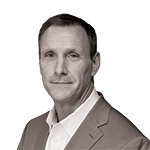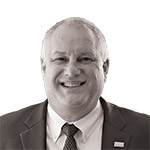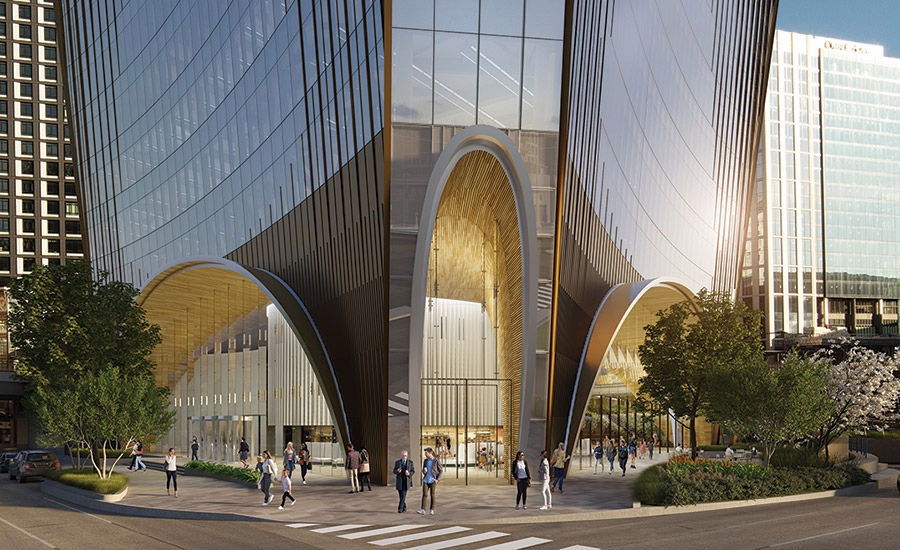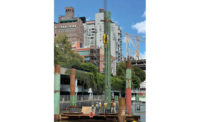As much as COVID-19 has led more firms to put a focus on digital innovation, ENR Top 500 Design Firms are also finding themselves having deeper discussions with clients about long-term design packages that help cut carbon emissions, execute ESG goals and meet diversity, equity and inclusion (DEI) markers for stakeholders.
Steinberg Hart President and CEO David Hart says the firm’s focus on DEI has been its biggest success.
“I think it’s the path to even greater successes for our firm in the future,” says Hart. “We’re having real conversations with our clients and actively pursuing ways to improve processes and outcomes on our projects. It’s a long-term plan.
Related Links
ENR 2022 Top 500 Design Firm Rankings
ENR Top 500 Design Firm Revenue Pushed by Private Equity
ENR Top 500 Design Firms Invest in Technology to Do More
Top 500 Design Firms Add Value With DEI, ESG Support
2022 Top 500 Design Firms: Invest to Do More | Full PDF
(Subscription Required)
“This has always been something we strived for, but the pandemic really pushed us to the next level,” he adds.
Recognizing how infrastructure spending could transform communities and leave others behind, WSP USA recently formed the Equity Center of Excellence to “drive the transformation of infrastructure to full and equitable access for underserved, marginalized and disinvested communities,” says CEO Lou Cornell.
Equity has become a measure of progress tied to many infrastructure developments as a vital lifeline for communities, he notes.

“We understand that our work has lasting impacts on people's lives, so the center ensures every WSP project integrates equity.”
Lou Cornell, CEO, WSP
“We understand that our work has lasting impacts on people’s lives, so the center ensures that every WSP project integrates equity into its processes, from planning to resourcing to implementation and use,” Cornell explains.
Clients measuring a design firm’s culture, values and DEI programs against their own quickly are becoming the norm, says Greg Hurd, president and CEO of BKF Engineers.
“When selecting consultants, owners are seemingly more interested in working with firms that amplify diversity and align with their own cultures and values, rather than the portfolio of our services,” says Hurd. “While services and experience are a key aspect of selecting BKF, we are seeing more owners interested in our culture and how we incorporate DEI into our design philosophy.”
Design firms that are engineering diversity, equity and inclusion philosophy into projects is another way to add more to their scope of services with minimal risk, firms report.
“For many clients, we are developing COVID-19 market impact statements that are tailored to their community and based on research and our experience,” says Huckabee CEO Christopher M. Huckabee.
In the education market, Huckabee helps clients communicate with stakeholders on project impacts. It’s an opportunity for the firm to provide wrap-around services, such as communication strategy, but also serve as a voice in the industry, says Huckabee.
More than a project consultant, clients are looking for a partner that will help them navigate the fluctuating construction market, he says.
“Huckabee works with our educational partners to develop strategies that involve prototype design, early design packages pre-bond, shorter duration in between bonds and different construction delivery methods,” says Huckabee.
Design firms are facing two distinct challenges in staffing needs and managing pressures of construction costs. “Very different items, but also very intertwined,” he says. How design firms holistically find solutions for both will play a big role in whether infrastructure act spending strengthens the economy.
People as a Priority
A major part of the new infrastructure funding law is navigating its stipulations for those funds. The moment Congress passed the act, many firms found a need to scale up staffing to simply provide assistance to help clients understand opportunities available to them.
“The world has changed in many ways over the past few years, and if your organization has not changed with it, retaining talent will be very difficult,” says Sasaki CEO James Miner. There have been multiple studies that show work-life balance, wages and quality of work and culture all play a role in staff retention, he adds.

“We are seeing more owners interested in our culture and how we incoporate DEI into our design philosophy.”
Greg Hurd, President and CEO, BKF Engineers
Where AECOM believes it sets itself apart is through a focus on shared success.
“On one hand, providing our people with challenging work on exciting, impactful projects while encouraging continuous learning and technical skills development,” explains President Lara Poloni. “On the other hand, driving career satisfaction, success and balance through competitive compensation, a growing benefits offering and a commitment to genuine workplace flexibility via our Freedom to Grow philosophy.”
These elements combined to drive both professional and organizational growth, she adds, but there is no one size fits all for recruitment.
Houston-based civil engineering firm DEC says it has filled most of its staffing requirements using typical recruiting methods.
But SmithGroup says that it still has 150 positions to fill despite hiring more than 150 people in the last sixth months.
“Our challenge is not unique,” says Mike Medici, president and managing partner. “Our workload continues to grow, which is a positive thing, but we must continue to find high-quality talent to fulfill our clients’ needs.”
He adds, “It may sound cliché, but we have found that our strongest selling point (and retention tool) is our culture.”
When the company culture is the right fit, firms find they don’t have to do much more to build dynamic teams.






-Tideway-Aurecon_ENRready.jpg?height=200&t=1627594016&width=200)
Post a comment to this article
Report Abusive Comment